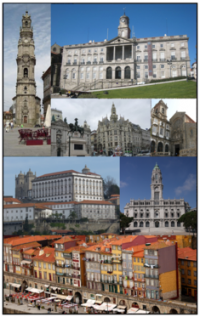|

Porto (Portuguese pronunciation: [ˈpoɾtu]), also known as Oporto in English, is the second-largest city in Portugal, after Lisbon, and one of the major urban areas in Southern Europe and the capital of second major great urban area in Portugal. Its administrative limits (an area of 41.66 km²/16 sq.mi) include a population of 237,584 (2011) inhabitants distributed within 15 civil parishes. The urban area of Porto, which extends beyond the administrative limits of the city, has a population of 1.3 million (2011) in an area of 389 km2 (150 sq mi),[5] making it the second-largest urban area in Portugal. The Porto Metropolitan Area includes approximately 1.7 million people,.[6][7][8] It is recognized as a Gamma- level global city by the Globalization and World Cities (GaWC) Study Group,[9] being one of five cities on the Iberian Peninsula with global city status, (the others being Madrid, Barcelona, Lisbon and Valencia).






 Please share your ideas with us.
Please share your ideas with us.